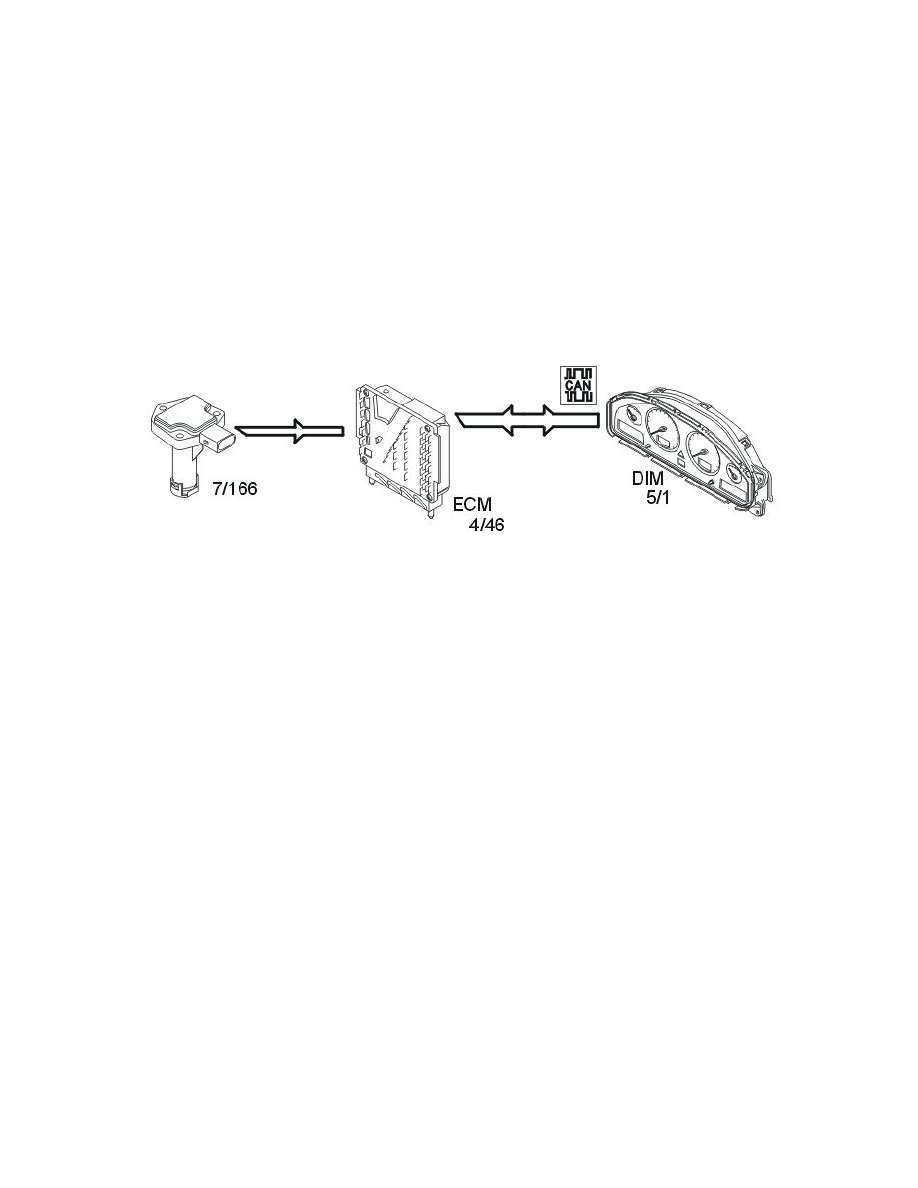S60 L5-2.4L VIN 64 B5244S6 (2003)

network (CAN), so that the transmission follows certain shifting patterns when the cruise control is active.
If the accelerator pedal (AP) is depressed the speed increases as normal and then resumes to the stored value when the driver releases the accelerator
pedal (AP) again.
The engine control module (ECM) continually stores the speed. If the cruise control is disengaged, if for example the driver depresses the brake pedal,
the previous speed can be resumed by pressing the "RESUME" button.
Cruise control cannot be activated at speeds below a certain speed.
Cruise control is disengaged:
-
when the driver presses the clutch pedal or brake pedal
-
when the driver presses the "CRUISE" button on the steering wheel
-
when the driver depresses the "0" button on the steering wheel
-
if "P" or "N" positions are transmitted on the controller area network (CAN) (applies to automatic transmissions)
-
if the speed deviates too much from the set value
-
when the control system detects a fault that prevents activation. (For further information, see diagnostic trouble code (DTC) information for the
relevant diagnostic trouble codes (DTCs)).
Oil monitoring (2005-, certain markets only)
General
The following components are used for oil monitoring:
-
oil level sensor (7/166)
-
engine control module (ECM) (4/46)
-
driver information module (DIM) (5/1).
One of the advantage of always monitoring the oil level is that the driver can then be informed, via the driver information module (DIM), if the oil needs
topping up.
Oil quality detection
To calculate the quality of the oil, the capacitance of the oil is gauged and then compared with the capacitance of the air. (Capacitance is the ability to
store an electrical charge).
The capacitance of the oil and air is measured using both the capacitive gauge elements. The volume of contaminants in the oil increases the capacitance.
This provides the electronics integrated in the oil level sensor with an oil quality dependent input signal.
Oil temperature detection
The PTC resistor integrated in the oil level sensor is used to calculate the oil temperature. The resistance of the PTC resistor changes, depending on the
oil temperature. The resistance increases as the oil temperature rises. This provides the electronics integrated in the oil level sensor with a temperature
dependent input signal.
Oil level detection
The electronics integrated in the sensor calculate the oil level using the obtained values for oil temperature and quality.
Temporary changes in the oil level in the oil trough must be taken into account to correctly calculate the oil level. This happens when cornering and
taking hills for example. The engine control module (ECM) makes these calculations using the oil level sensor signal and a number of other parameters.
These other parameters include the vehicle speed signal and the load signal.
Oil level sensor signal
The oil level sensor internally calculates the parameters for oil level, quality and temperature. A PWM signal is then generated and transmitted on a cable
to the engine control module (ECM).
